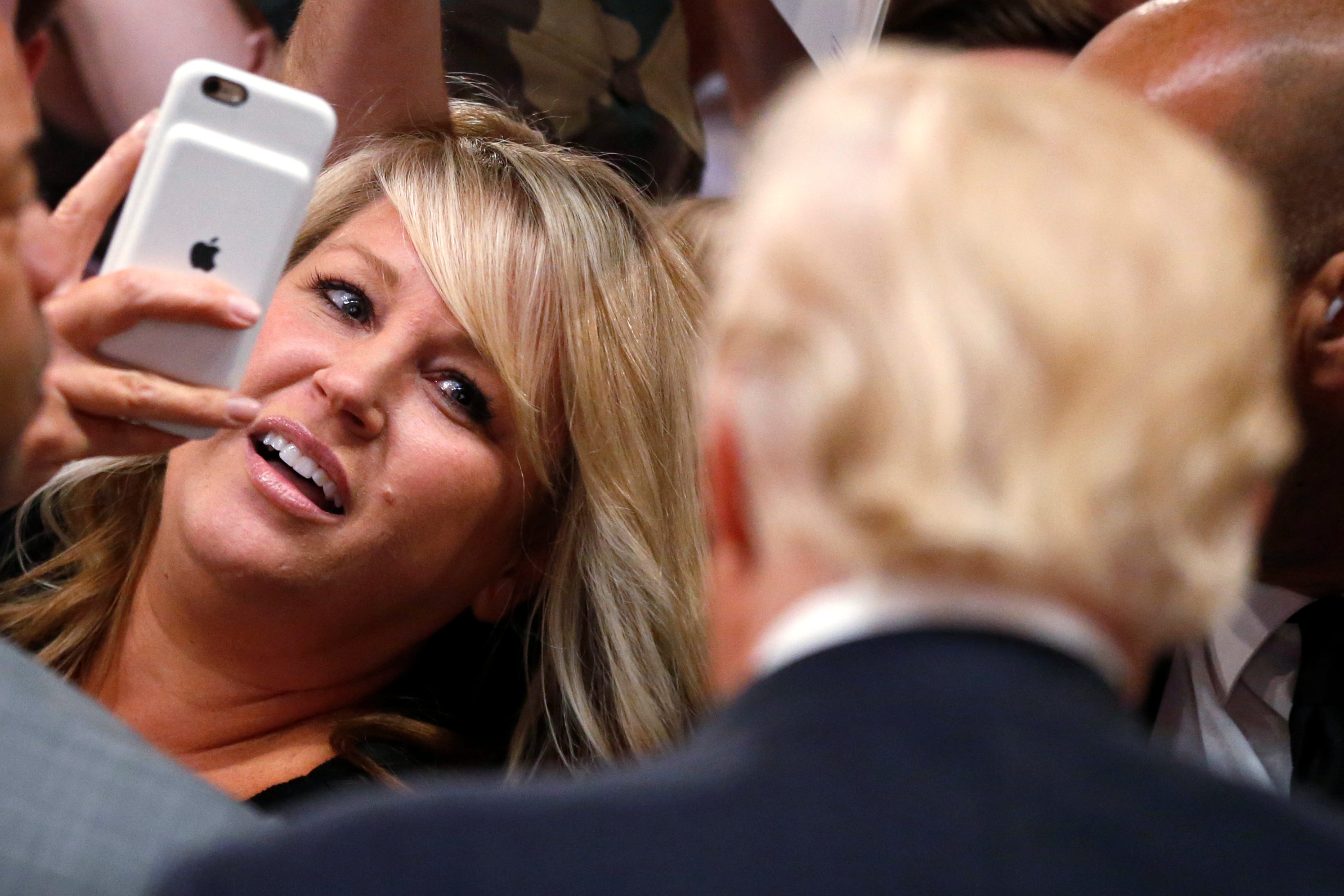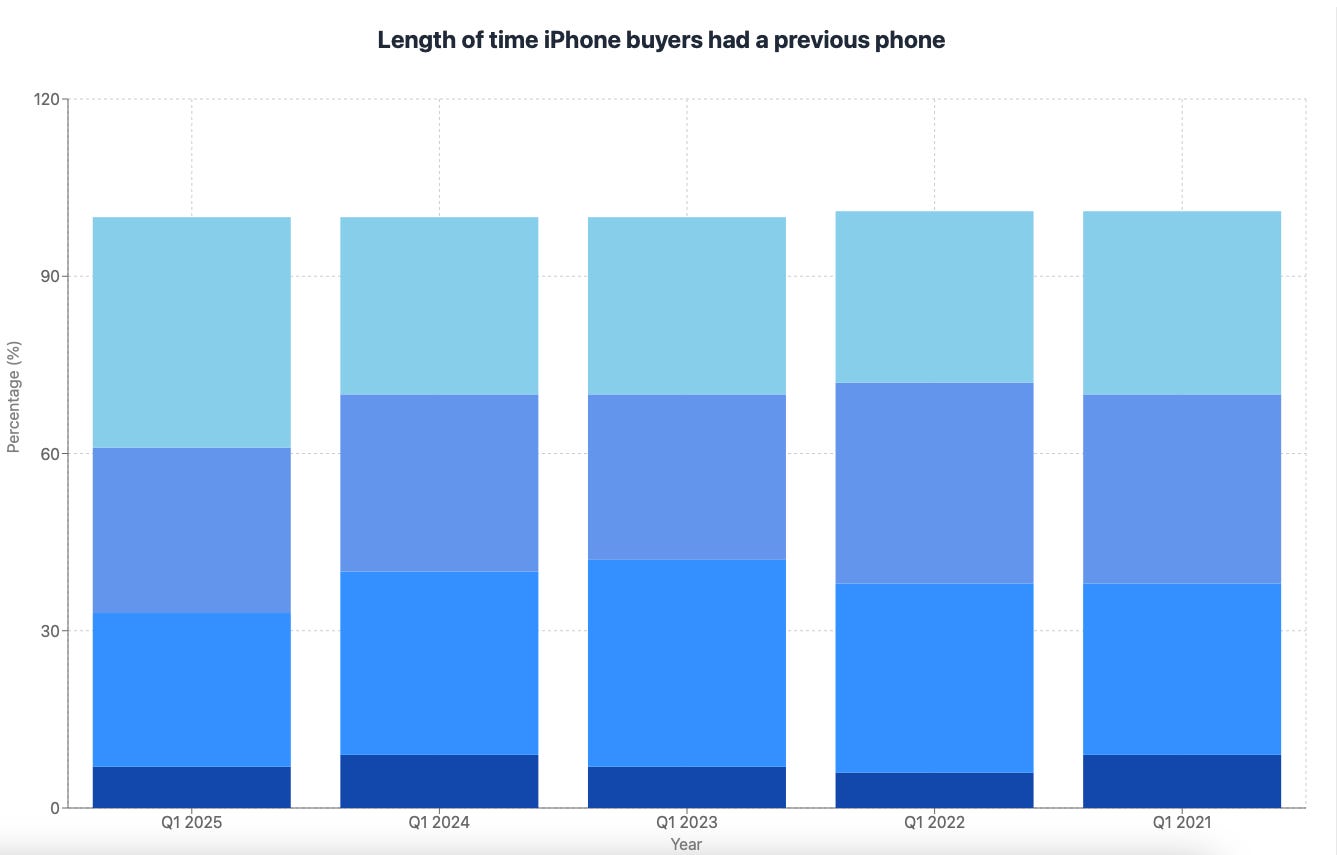
REUTERS/Lucy Nicholson
In a surprising twist, it wasn’t flashy AI features that finally nudged longtime iPhone users to upgrade — it was tariffs.
Wall Street analysts have been predicting a major iPhone upgrade cycle since Apple started integrating generative AI into the devices about a year ago. It hasn’t really happened yet.
However, fears of impending price hikes due to tariffs drove a notable surge in iPhone purchases in the first quarter of 2025, according to data from Consumer Intelligence Research Partners. This wasn’t a marginal blip.
The percentage of US iPhone buyers retiring phones three years or older hit 39% in this recent period. That’s up from a steady 30% in previous quarters.
“That is a significant shift,” CIRP founders Michael Levin and Josh Lowitz wrote in a note to clients on Wednesday. “The threat of tariff-induced price increases really moved the needle.”
Maybe Tim Cook should thank Donald Trump?

Source: Consumer Intelligence Research Partners
This shift marks a significant behavioral change among iPhone users, particularly those known for holding onto their devices the longest.
Since the end of two-year carrier subsidies, and thanks to more durable hardware and better battery life, consumers have been upgrading less frequently. But the looming specter of higher prices changed the calculus for many iPhone owners. Long-term users, typically more cost-conscious than tech-hungry early adopters, decided it was better to buy now than risk paying more later.
Interestingly, the tariff scare didn’t inspire a blanket rush to upgrade across all user types. Those who already upgrade frequently, often after just one or two years, didn’t significantly alter their patterns, according to CIRP’s findings. Instead, it was the “delayers” — users who cling to aging devices — that made the leap. For them, this iPhone upgrade was less about chasing AI innovation and more about necessity: replacing a failing phone before the price tag climbed out of reach.
Apple is a utility
The data confirms what I told BI readers about earlier this year: an iPhone is a utility now for most people. We don’t care about the whiz-bang new features, we just need it not to break for as long as possible so we can run our increasingly digital lives.
Long-term iPhone owners don’t upgrade for status or the latest camera specs; they upgrade when holding off any longer becomes riskier than making a purchase. This cohort, often overlooked in flashy product launches, just made a major impact on Apple’s quarterly sales.
What remains to be seen is whether this bump is a one-time blip or the start of a new pattern. If macroeconomic concerns continue to shape tech-buying habits, Apple and its competitors may need to rethink how they target and serve this “long-hold” user base. For now, though, it seems a little tariff fear went a long way in moving a notoriously cautious segment of the market.
Will future pricing fears continue to drive these pragmatic upgraders into the Apple Store sooner than expected?
Time, and tariffs, will tell.
The post Wall Street thought AI would spark a massive iPhone upgrade cycle. Turns out, fear of Trump’s tariffs did the trick. appeared first on Business Insider.




